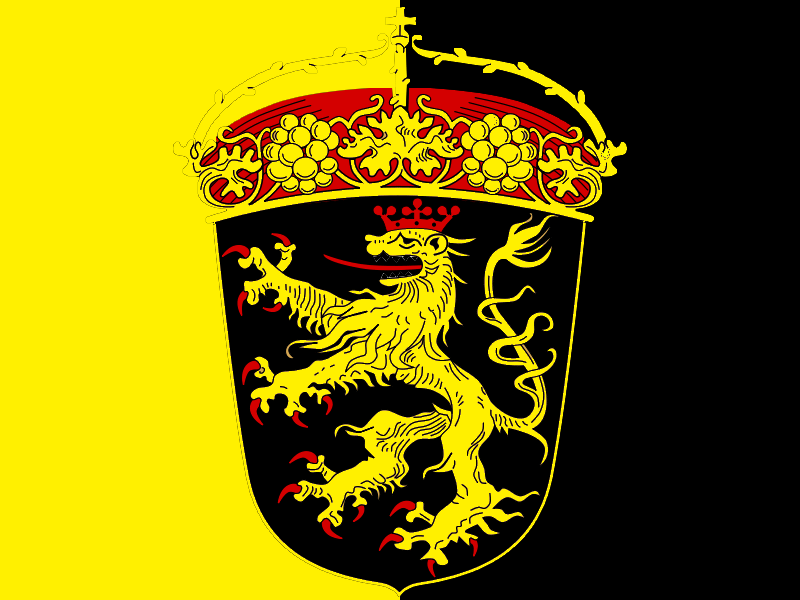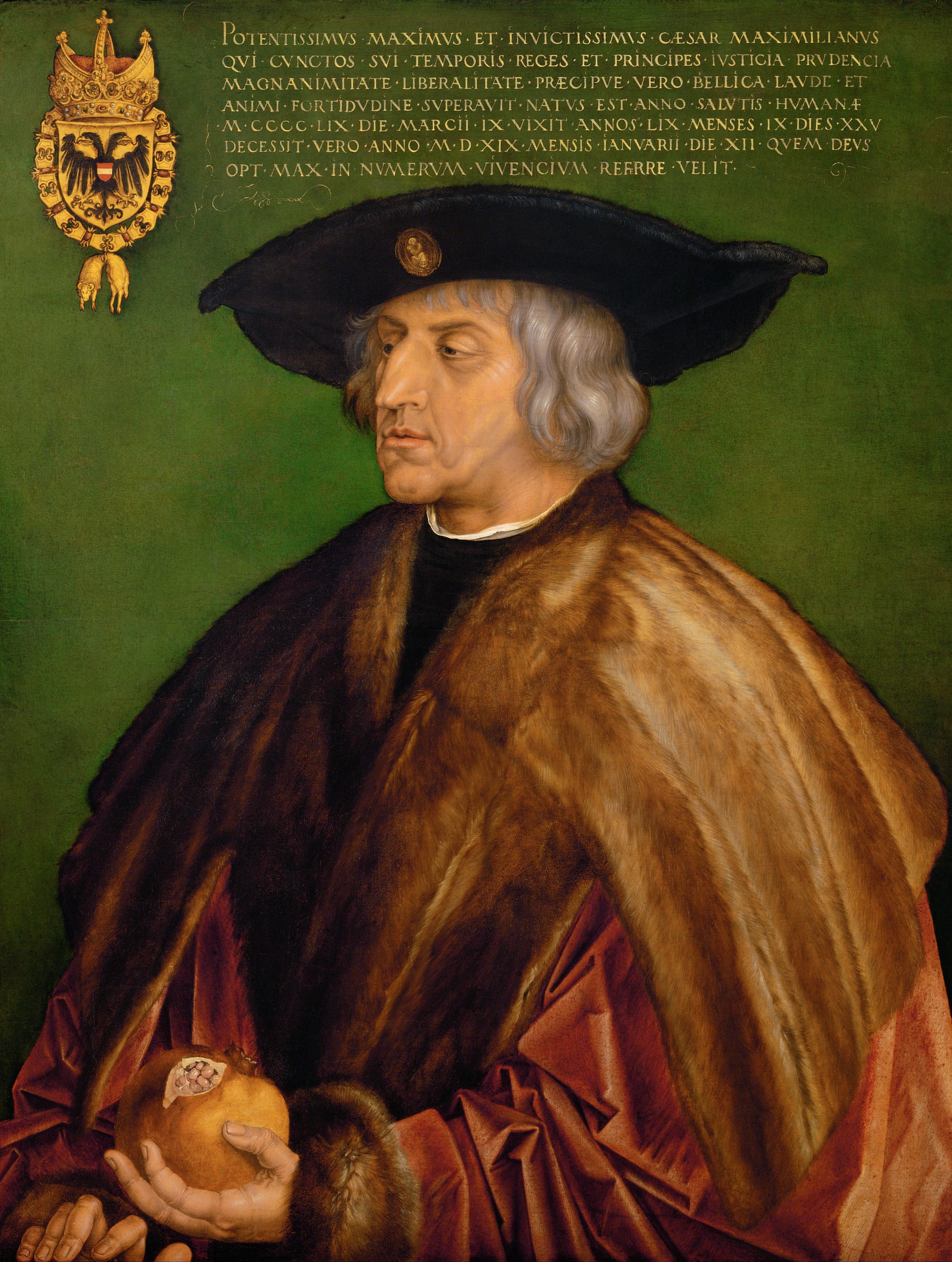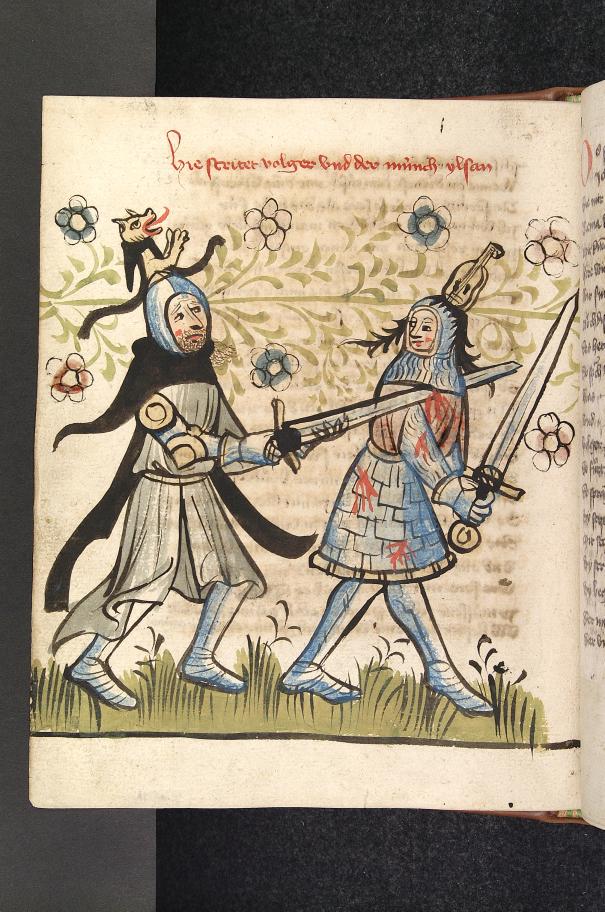|
Pfälzisch
Palatine German (endonym: ; Standard German: ), also known as Palatine Dutch, is a Rhenish Franconian language and is spoken in the Upper Rhine Valley, roughly in the area between Zweibrücken, Kaiserslautern, Alzey, Worms, Ludwigshafen am Rhein, Mannheim, Odenwald, Heidelberg, Speyer, Landau, Wörth am Rhein and the border to Alsace and Lorraine, in France, but also beyond. The Pennsylvania Dutch language, also called Pennsylvania German, is descended primarily from the Palatine German that was spoken by Palatine refugees who emigrated to North America from the 17th to the 19th centuries and maintained their native language. Danube Swabians in Croatia and Serbia also use many elements of Palatinate German. spoken in the western Palatinate () is normally distinguished from the spoken in the eastern Palatinate (). The English term ''Palatine'' refers to the Palatinate region, where the language is spoken. Pronunciation and grammar vary from region to region and even ... [...More Info...] [...Related Items...] OR: [Wikipedia] [Google] [Baidu] |
Rhenish Franconian
__NOTOC__ Rhenish Franconian or Rhine Franconian (german: Rheinfränkisch ) is a dialect chain of West Central German. It comprises the varieties of German spoken across the western regions of the states of Saarland, Rhineland-Palatinate, northwest Baden-Württemberg, and Hesse in Germany. It is also spoken in northeast France, in the eastern part of the of Moselle in the Lorraine region, and in the north-west part of Bas-Rhin in Alsace. To the north, it is bounded by the Sankt Goar line (or '' line'') which separates it from Moselle Franconian; to the south, it is bounded by the Main line which is also referred to as the ''Speyer line'' which separates it from the Upper German dialects. Subgroups Cornelia Stroh: ''Sprachkontakt und Sprachbewußtsein: Eine soziolinguistische Studie am Beispiel Ost-Lothringens.'' Gunter Narr Verlag Tübingen, Tübingen, 1993, p. 34 * or Hessian * ** or Palatinate German ** or Lorraine Franconian See also * Saarland (section ''Local dialect ... [...More Info...] [...Related Items...] OR: [Wikipedia] [Google] [Baidu] |
Pennsylvania Dutch Language
Pennsylvania Dutch (, or ), referred to as Pennsylvania German in scholarly literature, is a variety (linguistics), variety of Palatine German language, Palatine German, also known as Palatine Dutch, spoken by the Amish, Old Order Amish, Old Order Mennonite, Old Order Mennonites, Fancy Dutch, and other descendants of Germany, German immigrants in the United States and Canada. There are possibly more than 300,000 native speakers of Pennsylvania Dutch in the United States and Canada. It has traditionally been the dialect of the Pennsylvania Dutch, descendants of late 17th- and early to late 18th-century immigrants to Pennsylvania, Maryland, Virginia, West Virginia, and North Carolina primarily from Southern Germany and, less so, from the eastern France regions of Alsace and Lorraine, and parts of Switzerland. Although the term Pennsylvania Dutch is often taken to refer to the Amish and related Old Order Anabaptism, Old Order groups, it does not imply a connection to any particular ... [...More Info...] [...Related Items...] OR: [Wikipedia] [Google] [Baidu] |
Rhine Franconian
__NOTOC__ Rhenish Franconian or Rhine Franconian (german: Rheinfränkisch ) is a dialect chain of West Central German. It comprises the varieties of German spoken across the western regions of the states of Saarland, Rhineland-Palatinate, northwest Baden-Württemberg, and Hesse in Germany. It is also spoken in northeast France, in the eastern part of the of Moselle in the Lorraine region, and in the north-west part of Bas-Rhin in Alsace. To the north, it is bounded by the Sankt Goar line (or '' line'') which separates it from Moselle Franconian; to the south, it is bounded by the Main line which is also referred to as the ''Speyer line'' which separates it from the Upper German dialects. Subgroups Cornelia Stroh: ''Sprachkontakt und Sprachbewußtsein: Eine soziolinguistische Studie am Beispiel Ost-Lothringens.'' Gunter Narr Verlag Tübingen, Tübingen, 1993, p. 34 * or Hessian * ** or Palatinate German ** or Lorraine Franconian See also * Saarland (section ''Local dial ... [...More Info...] [...Related Items...] OR: [Wikipedia] [Google] [Baidu] |
Mannheim
Mannheim (; Palatine German: or ), officially the University City of Mannheim (german: Universitätsstadt Mannheim), is the second-largest city in the German state of Baden-Württemberg after the state capital of Stuttgart, and Germany's 21st-largest city, with a 2020 population of 309,119 inhabitants. The city is the cultural and economic centre of the Rhine-Neckar Metropolitan Region, Germany's seventh-largest metropolitan region with nearly 2.4 million inhabitants and over 900,000 employees. Mannheim is located at the confluence of the Rhine and the Neckar in the Kurpfalz (Electoral Palatinate) region of northwestern Baden-Württemberg. The city lies in the Upper Rhine Plain, Germany's warmest region. Together with Hamburg, Mannheim is the only city bordering two other federal states. It forms a continuous conurbation of around 480,000 inhabitants with Ludwigshafen am Rhein in the neighbouring state of Rhineland-Palatinate, on the other side of the Rhine. Some northe ... [...More Info...] [...Related Items...] OR: [Wikipedia] [Google] [Baidu] |
West Central German
West Central German (german: Westmitteldeutsch) belongs to the Central, High German dialect family of German. Its dialects are Franconian and comprise the parts of the Rhinelandic continuum located south of the Benrath line isogloss, including the following sub-families: * Central Franconian () ** Ripuarian (), spoken in North Rhine-Westphalia (including ) and German-speaking Belgium and a small edge in the south of the Dutch province of Limbourg. ** Moselle Franconian (; french: francique luxembourgeois) in Rhineland-Palatinate, Saarland and France *** Luxembourgish (; lb, Lëtzebuergesch; or ) in Luxembourg, Belgium and France *** Hunsrik (), spoken in Brazil and derived from the dialect of Moselle Franconian * Rhine Franconian (; ) ** Palatinate Franconian (; ), spoken in Rhineland-Palatinate *** Lorraine Franconian (; ) in the French region of Lorraine *** Bukovina German () in Bukovina (extinct) *** Pennsylvania German () in historical communities in North America ... [...More Info...] [...Related Items...] OR: [Wikipedia] [Google] [Baidu] |
Palatine Dutch
Palatines (german: Pfälzer), also known as the Palatine Dutch, are the people and princes of Palatinates ( Holy Roman principalities) of the Holy Roman Empire. The Palatine diaspora includes the Pennsylvania Dutch and New York Dutch. In 1709, England found itself hosting thousands of Palatines and other Germans who were fleeing famine, war and religious persecution in their native lands. Many of the first arrivals came from the Rhenish and Bavarian Palatinates, and the refugees became collectively known as the "Poor Palatines". They had been displaced by French invasions and famine during the Nine Years' War and the War of the Spanish Succession. After arriving in London, many were resettled in Ireland and British America. Towards the end of the 17th century and into the 18th, the wealthy region was repeatedly invaded by French troops during two wars. At that time the region had not yet fully recovered from the Thirty Years' War. They imposed a scorched-earth policy a ... [...More Info...] [...Related Items...] OR: [Wikipedia] [Google] [Baidu] |
Palatines
Palatines (german: Pfälzer), also known as the Palatine Dutch, are the people and princes of Palatinates ( Holy Roman principalities) of the Holy Roman Empire. The Palatine diaspora includes the Pennsylvania Dutch and New York Dutch. In 1709, England found itself hosting thousands of Palatines and other Germans who were fleeing famine, war and religious persecution in their native lands. Many of the first arrivals came from the Rhenish and Bavarian Palatinates, and the refugees became collectively known as the "Poor Palatines". They had been displaced by French invasions and famine during the Nine Years' War and the War of the Spanish Succession. After arriving in London, many were resettled in Ireland and British America. Towards the end of the 17th century and into the 18th, the wealthy region was repeatedly invaded by French troops during two wars. At that time the region had not yet fully recovered from the Thirty Years' War. They imposed a scorched-earth policy and cont ... [...More Info...] [...Related Items...] OR: [Wikipedia] [Google] [Baidu] |
High German Languages
The High German dialects (german: hochdeutsche Mundarten), or simply High German (); not to be confused with Standard High German which is commonly also called ''High German'', comprise the varieties of German spoken south of the Benrath and Uerdingen isoglosses in central and southern Germany, Austria, Liechtenstein, Switzerland, Luxembourg, and eastern Belgium, as well as in neighbouring portions of France (Alsace and northern Lorraine), Italy (South Tyrol), the Czech Republic (Bohemia), and Poland (Upper Silesia). They are also spoken in diaspora in Romania, Russia, the United States, Brazil, Argentina, Mexico, Chile, and Namibia. High German is marked by the High German consonant shift, separating it from Low German (Low Saxon) and Low Franconian (including Dutch) within the continental West Germanic dialect continuum. Classification As a technical term, the "high" in High German is a geographical reference to the group of dialects that forms "High German" (i.e. "High ... [...More Info...] [...Related Items...] OR: [Wikipedia] [Google] [Baidu] |
Alzey
Alzey () is a ''Verband''-free town – one belonging to no ''Verbandsgemeinde'' – in the Alzey-Worms district in Rhineland-Palatinate, Germany. It is the fifth-largest town in Rhenish Hesse, after Mainz, Worms, Germany, Worms, Ingelheim am Rhein and Bingen am Rhein, Bingen. Alzey is one of the ''Nibelungenstädte'' – towns associated with the ''Nibelungenlied'' – because it is represented in this work by the character Volker von Alzey. Hence, Alzey is also known as ''Volkerstadt''. Geography Location Alzey lies in Rhenish Hesse on the western edge of the northern part of the Upper Rhine Plain. It is surrounded by the northern part of the Alzey Hills, which meets the Rhenish Hesse Hills towards the south and the North Palatine Uplands towards the east. The town is found some 30 km southwest of Mainz and some 22 km (as the crow flies, in each case) northwest of Worms, Germany, Worms. Through Alzey, in places underground, flows the river Selz, a left-bank tributa ... [...More Info...] [...Related Items...] OR: [Wikipedia] [Google] [Baidu] |
Lorraine
Lorraine , also , , ; Lorrain: ''Louréne''; Lorraine Franconian: ''Lottringe''; german: Lothringen ; lb, Loutrengen; nl, Lotharingen is a cultural and historical region in Northeastern France, now located in the administrative region of Grand Est. Its name stems from the medieval kingdom of Lotharingia, which in turn was named after either Emperor Lothair I or King Lothair II. Lorraine later was ruled as the Duchy of Lorraine before the Kingdom of France annexed it in 1766. From 1982 until January 2016, Lorraine was an administrative region of France. In 2016, under a reorganisation, it became part of the new region Grand Est. As a region in modern France, Lorraine consisted of the four departments Meurthe-et-Moselle, Meuse, Moselle and Vosges (from a historical point of view the Haute-Marne department is located in the region), containing 2,337 communes. Metz is the regional prefecture. The largest metropolitan area of Lorraine is Nancy, which had developed for centu ... [...More Info...] [...Related Items...] OR: [Wikipedia] [Google] [Baidu] |
Alsace
Alsace (, ; ; Low Alemannic German/ gsw-FR, Elsàss ; german: Elsass ; la, Alsatia) is a cultural region and a territorial collectivity in eastern France, on the west bank of the upper Rhine next to Germany and Switzerland. In 2020, it had a population of 1,898,533. Alsatian culture is characterized by a blend of Germanic and French influences. Until 1871, Alsace included the area now known as the Territoire de Belfort, which formed its southernmost part. From 1982 to 2016, Alsace was the smallest administrative ''région'' in metropolitan France, consisting of the Bas-Rhin and Haut-Rhin departments. Territorial reform passed by the French Parliament in 2014 resulted in the merger of the Alsace administrative region with Champagne-Ardenne and Lorraine to form Grand Est. On 1 January 2021, the departments of Bas-Rhin and Haut-Rhin merged into the new European Collectivity of Alsace but remained part of the region Grand Est. Alsatian is an Alemannic dialect closely related ... [...More Info...] [...Related Items...] OR: [Wikipedia] [Google] [Baidu] |
Wörth Am Rhein
Wörth am Rhein () is a town in the southernmost part of the district of Germersheim, in Rhineland-Palatinate, Germany. It is on the left bank of the Rhine approximately 10 km west of the city centre of Karlsruhe and is just north of the German-French border. Daimler AG's largest truck production plant (2.8 km2) has been located in the town since 1960. Mayors * 1960–1980: Karl-Josef Stöffler (CDU) * 1980–2016: Harald Seiter (CDU) * since 2016: Dennis Nitsche (SPD) Gallery Friedenskirche woerth.JPG, Friedenskirche (Peace church) Wörth-Büchelberg-St Laurentius-04-gje.jpg, St. Laurentius in Wörth-Büchelberg Wörth-Schaidt-St Leo-02-gje.jpg, St. Leo in Wörth-Schaidt Wörth-Schaidt-02-Hauptstr ab 43-gje.jpg, Wörth-Schaidt Wörth Hafen2.JPG, Wörth harbour NSG Goldgrund, Rheinauen.JPG, Rhine water meadows Nature reserve area Notable people * Ferdinand Brossart (1849–1930), 1915-1923 Bishop of the Diocese of Covington, Kentucky, United States. * Ludwig Damminger (19 ... [...More Info...] [...Related Items...] OR: [Wikipedia] [Google] [Baidu] |







